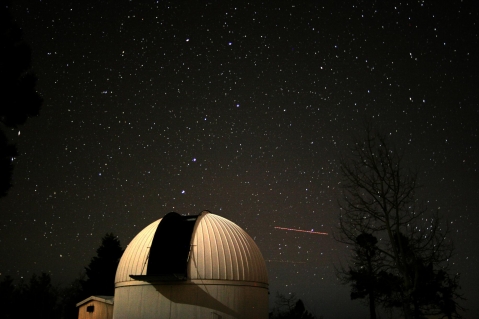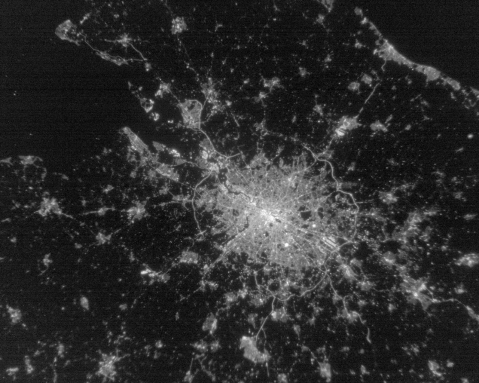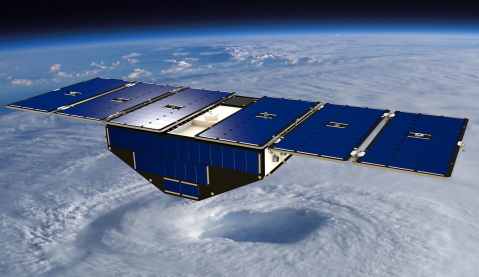While much of the work at The Aerospace Corporation is designed for places above and beyond Earth, we also create technology focused on the planet we call home. Every day, Aerospace engineers pioneer new ways to observe and protect the planet – from innovating imaging techniques that allow us to observe Earth in new ways to developing tools to study our climate to using artificial intelligence to protect the planet from asteroids and other threats.
In celebration of the 50th anniversary of Earth Day on April 22, here is a look at some of the ways Aerospace is contributing to the protection and exploration of our planet.
A Camera That Uses Earth's Atmospheric Glow
The NIRAC camera, developed by a team at Aerospace, captures stunning nighttime imagery of the planet from the International Space Station.

Protecting Our Planet From Asteroids
A 25-meter asteroid could devastate an area of Earth the size of Manhattan. Here’s how Aerospace developed artificial intelligence to help make sure that doesn’t happen.

First Satellites Launched to Aid In Arctic Rescue
A pair of CubeSats, nicknamed Polar Scout, will help locate stranded ships in the growing number of treacherous Arctic shipping lanes.

UNCOVERING THE AURORAS
Scientists at The Aerospace Corporation help explore the mysteries of the aurora borealis with a stunning light show.

REVEALING NIGHTTIME IMAGES OF EARTH FROM A CUBESAT
The CubeSat Multispectral Observing System (CUMULOS) could prove to be a game-changer for weather forecasting, environmental monitoring, and other operations involving Earth-surface observation.
Catching a Ride on a Solar Sail
Cameras designed by The Aerospace Corporation play a critical role in the development of solar sails as scientists study their use for space exploration.

Hazmat Detection Aboard a Fireboat
The Aerospace Corporation partnered with the Long Beach Fire Department (LBFD) for a HAZMAT detection project that drastically improved public safety for the city’s residents due to its chemical, biological, radiological, nuclear, and high-yield explosives (CBRNE) detox and hazard detection capabilities.

GPS IMPROVES CYGNSS FORECASTING
GPS technology that many people use daily is now being used to predict and track hurricanes. Aerospace played a key role in testing a critical subsystem of the Cyclone Global Navigation Satellite System (CYGNSS), an eight-microsatellite constellation.

AIRBORNE CHEMICAL ANALYSIS IN NEW YORK
The Aerospace-developed Ground-Based SHARP Sensor (GBSS) played a starring role in conducting an airborne chemical analysis on the air of New York City for a Center for Urban Science and Progress (CUSP) study.

